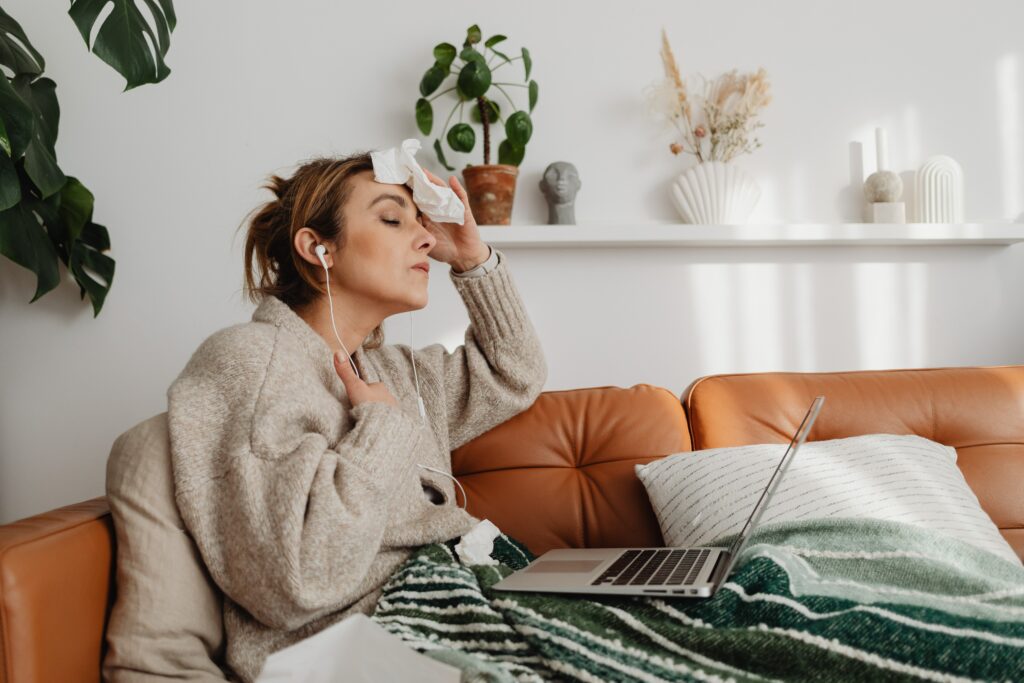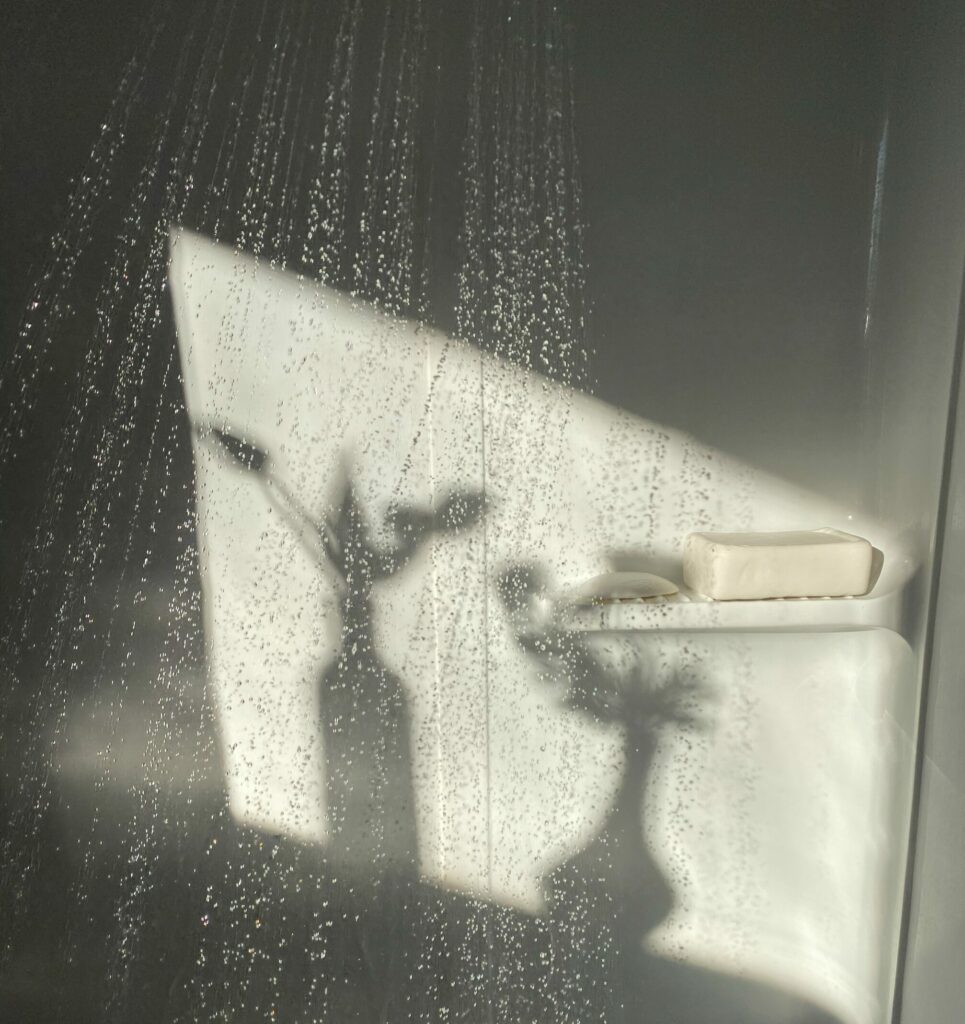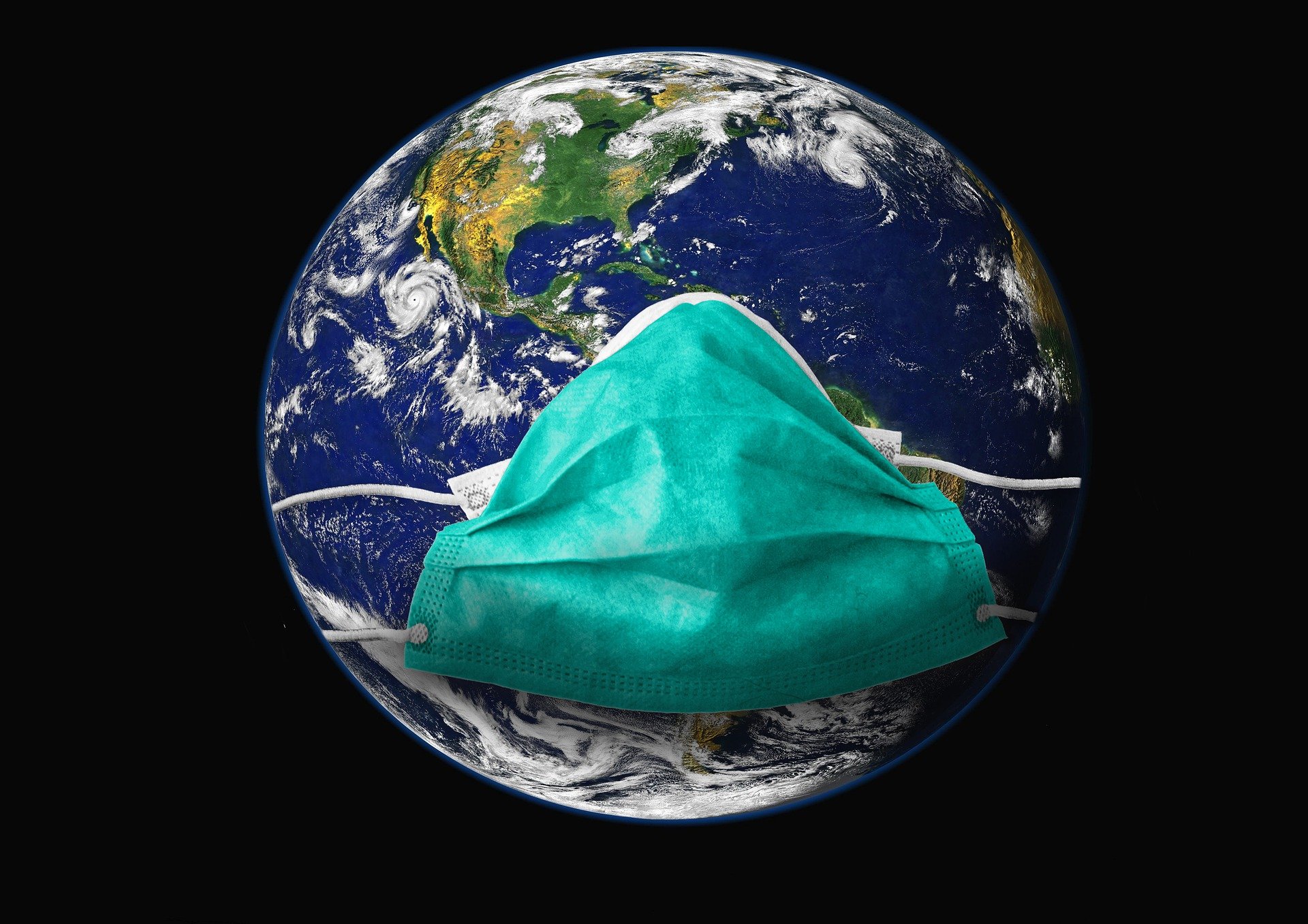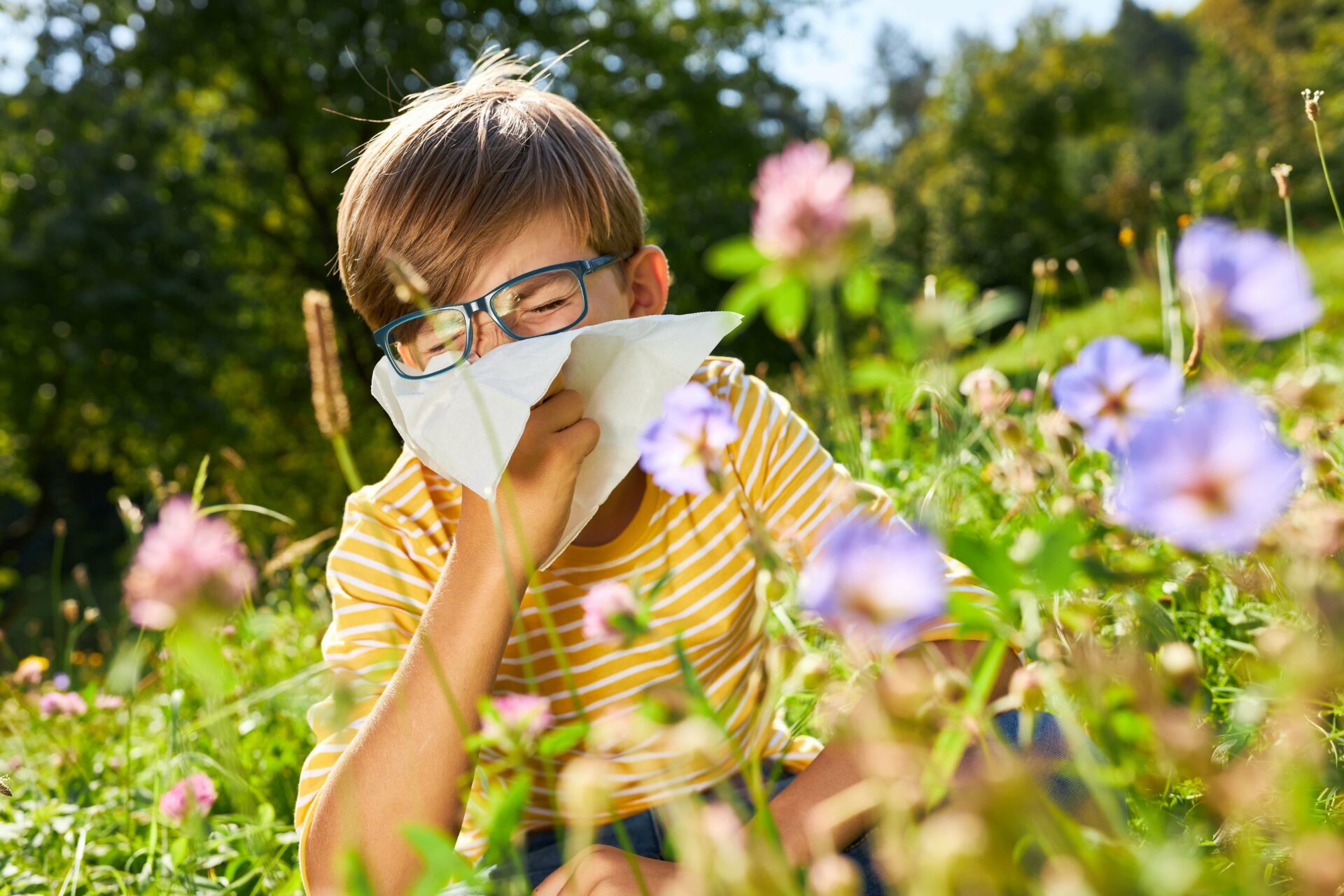When they erupt at night or in inappropriate situations, they can be particularly unpleasant and severely affect quality of life. They occur suddenly and unexpectedly and predominantly in women in the Menopause on: Hot flashes.
But what triggers the heatstroke? And what remedies can bring relief? In addition to some simple tips, we present you our 4 medicinal plants that can have a soothing effect.
What are hot flashes?

Causes of hot flashes
Such a heat wave can be traced back to a disturbance in the autonomic nervous system as a result of a drop in estrogen. In this case, the internal temperature control system erroneously registers a body temperature that is too low. In this way, the blood vessels suddenly dilate, leading to an increase in blood flow to the external (peripheral) areas of the body.
As a result, the skin temperature increases and flushing, palpitations and sweating occur. Subsequently, this process often develops into the opposite: due to the evaporation of sweat, the core body temperature drops below the normal range - the affected women begin to freeze easily.
Hot flashes during menopause
Hot flashes and sweats are typical side effects of menopause. They are not uncommon during this period - up to 90 percent of all women struggle with them.
As Menopausal symptomsThe menopause is the period of hormonal change at the end of the fertile phase of life from the mid-40s. The accompanying hormonal imbalance due to a decreased estrogen level leads to the typical menopausal symptoms such as hot flashes, Sleep disordersdepressive episodes and skin dryness. Learn more about menopause here.
However, the frequency, length and intensity of hot flashes that occur differs from woman to woman. At the beginning of menopause, hot flashes are most frequent and occur less and less frequently over time until they finally stop on their own after one to two years.
Hot flashes outside menopause
But can heatstrokes occur even before menopause? This can happen because there are a number of other factors that influence internal heat regulation. These include:
- The low estrogen level just before menstruation (PMS).
- Pregnancy, especially in the first and second trimester
- Mental stress
- Diseases, such as hypothyroidism, diabetes and allergies.
- Certain medications
- Overweight
Due to these causes, young women and men can also be affected by hot flashes.
Diagnosis and therapy of heatstroke
How is the diagnosis made?
The diagnosis is made through a detailed interview and physical examinations by a doctor. First, he inquires about the timing, intensity and duration of the hot flashes, possible other diseases and the use of medication. After the initial interview, blood pressure is measured, the thyroid gland is palpated, and the heart and lungs are checked for function. For women, it is advisable to have a gynecological examination. A blood test should also be performed to check hormone status. If certain diseases are suspected, further examinations are advisable, for example:
- an electrocardiogram (ECG) for potential heart disease
- a thyroid scintigraphy if thyroid disease is suspected
- a computed tomography (CT) scan in the event of possible cancer
After that, an individual therapy targeting the complaints can finally be determined.
Can hot flashes be treated?
If the trigger for hot flashes is not an underlying disease or the use of certain medications, but the woman's menopause, hormone replacement therapy can counteract the resulting hormone deficiency with hormone preparations to specifically alleviate the estrogen deficiency-related symptoms. However, it is recommended only in severe cases and only for short-term treatment, as it carries health risks.
The symptoms are usually not so severe that hormone replacement therapy is necessary. Doctors initially recommend treatment with herbal preparations, such as those available from Zimply Natural, and two cups of tea a day, such as sage or nettle tea.
5 tips against hot flashes
There are some lifestyle habits that promote hot flashes and sweats - including lack of exercise, obesity, stress, spicy food, high alcohol and caffeine consumption, and nicotine. This results in numerous ways to prevent the symptoms.
1. play sports

Whether it's swimming, cycling, hiking, or simply going for a walk, daily exercise stabilizes blood pressure and strengthens the cardiovascular system, blood vessels, and muscles.
In addition, physical activity can help balance the temperature regulator in the brain, Reduce stress and thus help to counteract menopausal symptoms - including heatstroke.
2. alternating showers

Daily alternating showers promote the mobility of blood vessels and boost blood circulation. It is best to start with a warm shower and then run a cold stream of water up the leg from the outer foot and back down the inside. The same movement can then be used to treat the other leg and arms. Then take a warm shower, repeat the process two more times and finish with a cold shower.
So-called "treading water" can also be helpful: Fill the bathtub with cold water up to the level of the back of the knee and then tread on the spot for 60 seconds, lifting your legs completely out of the water with each step.
3. light diet

Increased caffeine and alcohol consumption, as well as nicotine, can lead to reduced estrogen levels and thus destabilize the temperature regulator. Those who struggle with hot flashes should remain smoke-free and limit their consumption of caffeinated beverages and alcohol to about one cup or glass a day.
A light diet also helps to prevent sweating and hot flushes, since foods that are difficult to digest and highly spiced can also drive sweat production. It also prevents obesity, especially in combination with exercise, and has a positive effect on all bodily functions.
4. stress reduction

Anti-Stress can increase the intensity of hot flashes, because the hormones are out of balance. Therefore, it is important that you allow yourself to relax, especially in stressful times.
Relaxation techniques such as autogenic training, Qi Gong, progressive muscle relaxation, meditation or regular yoga sessions can help you to relax more in stressful everyday life.
5. herbal remedies

The intake of Sage, for example, over two cups of sage tea a day, can reduce sweat production.
In addition, so-called phytoestrogens, i.e. plant estrogens, are discussed as possible regulators of hormone balance. Isoflavones, which are contained in soy, have received particular attention. Although there are already studies that speak for the efficacy of high-dose isoflavone preparations, the consumer advice center argues against the use of such products because their efficacy has not been sufficiently proven.
Apart from this, the focus is on herbal preparations made from various medicinal plants and herbs. Medicinal plants that are brought together in our menopausal blend through the herbal refinement process of spagyric are Bugweed, St. John's wort, Pomegranate and Kava-Kava. Your self-configured spray results in a hormone-balancing, nerve-strengthening and antispasmodic combination against your menopausal symptoms. Your perfect companion to a symptom-free life!
With the power of spagyric against your complaints
About the digital configurator on the website of Zimply Natural you have the possibility to have your individualized natural remedy mixture against hot flashes and other menopausal complaints adjusted to your personal situation in a simple and uncomplicated way.
With Zimply Natural you can treat your complaints individually, holistically and naturally to counteract their causes in the long term.








